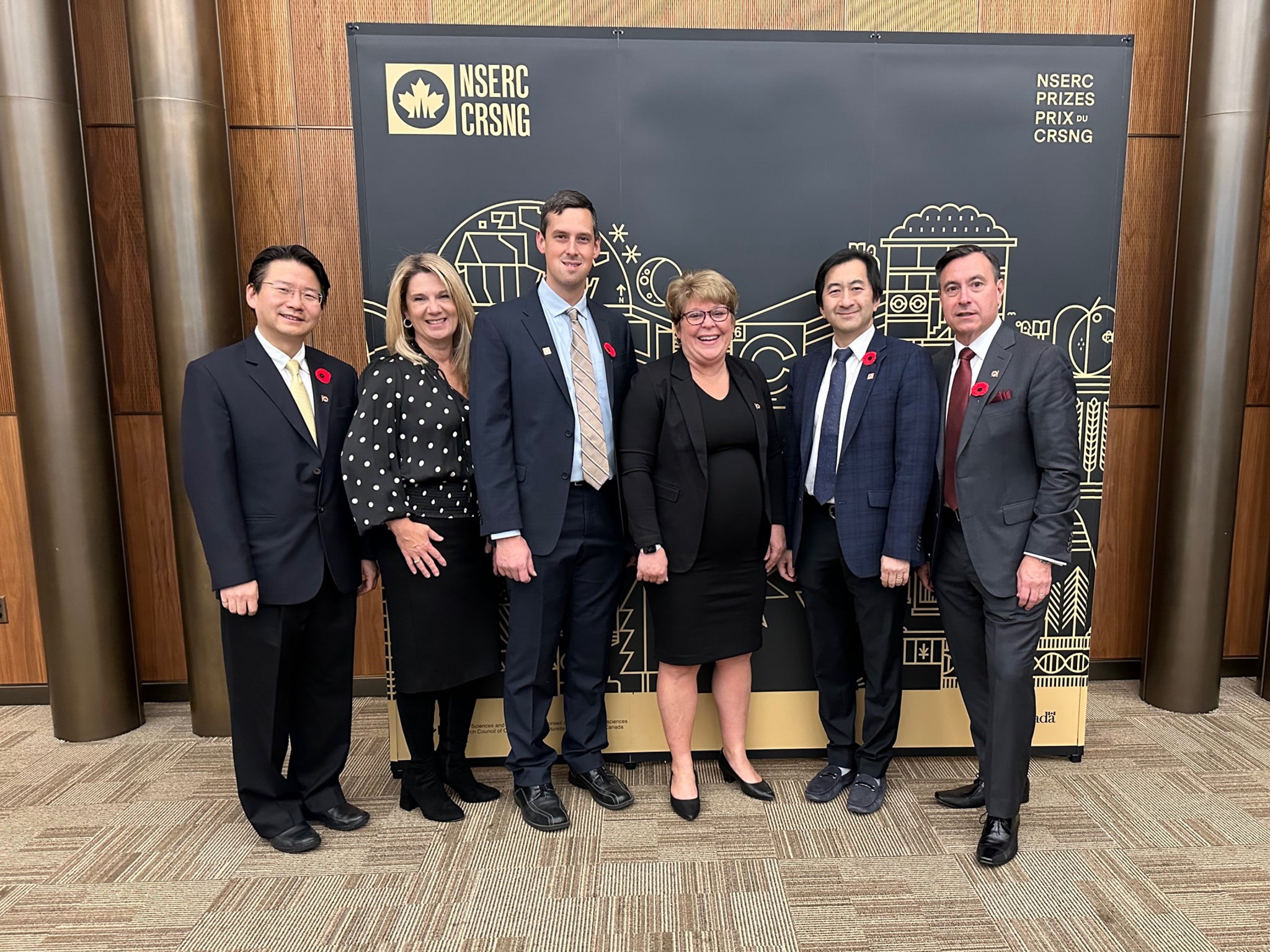
Prize-winning research aims to better treat eye diseases
Optometry professor Dr. Lyndon Jones a key member of team winning Brockhouse Canada Prize for Interdisciplinary Research in Science and Engineering

Optometry professor Dr. Lyndon Jones a key member of team winning Brockhouse Canada Prize for Interdisciplinary Research in Science and Engineering
By Karen Kawawada School of Optometry and Vision ScienceAn interdisciplinary, multi-institutional team with a University of Waterloo professor as a core member, has been named the winner of the prestigious Brockhouse Canada Prize for Interdisciplinary Research in Science and Engineering on November 1st.
The Natural Sciences and Engineering Research Council of Canada announced the 2023 Brockhouse Prize has been awarded to the C20/20 Innovation Hub, which comprises scientists, engineers and clinicians from McMaster University, the University of Toronto and Waterloo.
 Dr. Lyndon Jones of Waterloo’s School of Optometry and Vision Science is one of seven core investigators on the team, which is led by Dr. Heather Sheardown, a McMaster professor of chemical engineering. The team’s aim is to develop and commercialize methods to better deliver drugs to the eye.
Dr. Lyndon Jones of Waterloo’s School of Optometry and Vision Science is one of seven core investigators on the team, which is led by Dr. Heather Sheardown, a McMaster professor of chemical engineering. The team’s aim is to develop and commercialize methods to better deliver drugs to the eye.
Currently, most drugs for eye diseases are delivered in the form of eyedrops. However, drugs are removed from the surface of the eye very quickly via the tear draining system and due to blinking. As a result, most drops stay on the eye for only about five minutes.
“Typically, to get the relevant therapeutic effect, the drug needs to be at a very high concentration. That results in toxicity issues and extra cost,” says Jones, director of the Centre for Ocular Research and Education (CORE) in the School of Optometry and Vision Science. “If we could slow the drainage of the drug from the eye, we’d have far more effective drops.”
Some drugs are delivered via injection to the back of the eyes, which is unpopular with patients. The C20/20 team is working on ways to improve drug delivery methods to both the front and the back of the eye. The $250,000 grant that comes with the Brockhouse Prize will help team members continue with their research efforts.
Jones’ research focuses on making eyedrops more effective by having drugs bind to mucin receptors, which cover much of the surface of the eye. Mucin is a protein with a gel-like consistency, so if a drug is attached to something that’s attracted to mucin, it would hold onto the eye surface much longer, while improving its uptake into ocular tissue.

“Some of the animal studies we looked at showed we could get an effective result with about one-tenth of the concentration of traditional dry eye prescription drugs,” Jones says.
So far, the team has shown the safety and effectiveness of the new method in animal models. Jones estimates it will be five years before human clinical trials can be completed and another few years before new mucin-binding eyedrops hit the market.
Jones’ collaboration with Sheardown dates to the early 2000s, while the C20/20 team was formed in 2008. Since then, the team has trained some 100 early-career scientists, published many papers and filed multiple patents.
“The cool thing about this prize is that it’s collaborative,” says Jones, who is cross appointed to the departments of Biology, Chemistry, Chemical Engineering and Physics at Waterloo. “You can’t be good at everything, so I’ve always searched for collaborators. That’s how research needs to be done these days.”

Read more
Here are the people and events behind some of this year’s most compelling Waterloo stories

Read more
Irfhana Zakir Hussain works to strengthen Waterloo’s capacity to withstand and recover from climate-related health crises

Read more
Dr. Anita Layton and Dr. Kerstin Dautenhahn complete their C150 terms but their research impacting the future of health and technology continue
The University of Waterloo acknowledges that much of our work takes place on the traditional territory of the Neutral, Anishinaabeg, and Haudenosaunee peoples. Our main campus is situated on the Haldimand Tract, the land granted to the Six Nations that includes six miles on each side of the Grand River. Our active work toward reconciliation takes place across our campuses through research, learning, teaching, and community building, and is co-ordinated within the Office of Indigenous Relations.